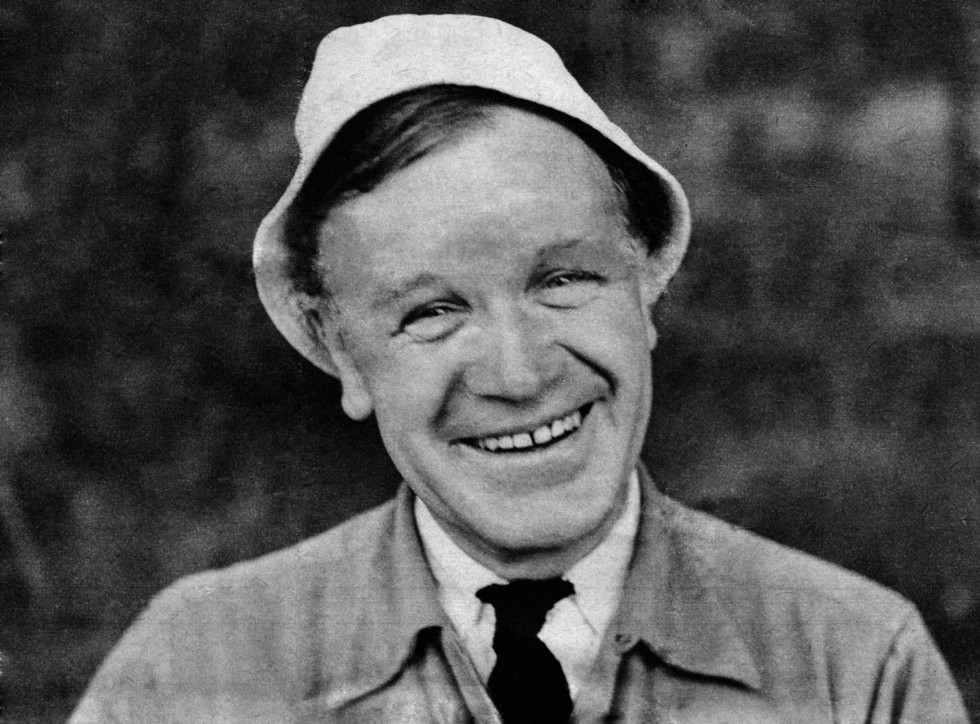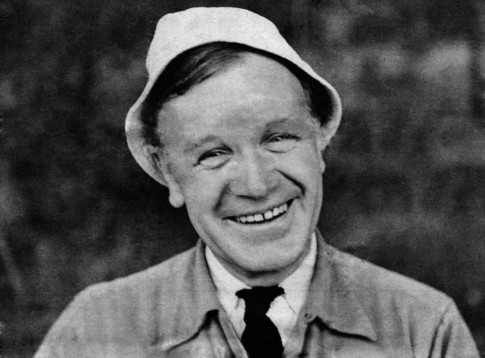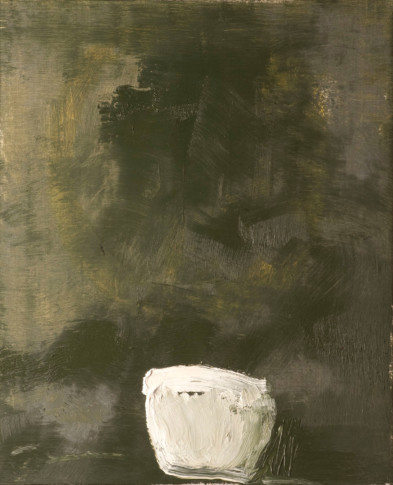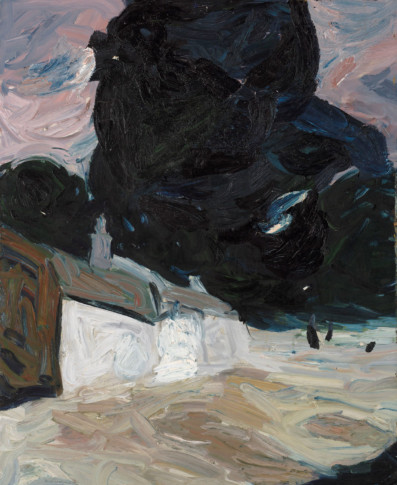
Evert Lundquist, 1961 © Photo: KG Kristoffersson
Biography Evert Lundquist
Evert Lundquist was born on 17 July, 1904, and grew up in Stockholm. He began painting at an early age, including during visits to France. In 1924, he began studying at Carl Wilhelmson’s art school, and the following year, he was accepted at the Royal University College of Fine Art. After years of study, interrupted repeatedly by bouts of depression, especially during the dark autumn months, Lundquist had his first exhibition in 1934 at Konstnärshuset. A few years later, he met the artist Ebba Reutercrona. They married in the summer of 1943 and lived for many years in Saltsjö-Duvnäs, where Lundquist obtained a studio through his friend and colleague, Olle Nyman.
A retrospective at the Academy of Art in Stockholm in 1944 was Evert Lundquist’s popular breakthrough, generating favourable reviews in the press, and in the ensuing decades he exhibited frequently in Stockholm and around Sweden. In 1947, the twins Hybner and Emanuel – Hymme and Manne – were born. After moving between temporary studios, Lundquist was eventually given the use of a studio in Kanton at Drottningholm in autumn 1953. This is where he continued to live and work until his death. It has now been turned into a Lundquist museum. He lived in his studio for long periods and periodically had no contact with his family, who lived in an apartment in Nacka. In 1957, however, his wife and two sons moved to a place that became available near the studio. Tragically, eight years later, his son Hymme disappeared without a trace.
In the late 1950s and early 1960s, Lundquist also exhibited his work internationally, participating in the São Paulo Biennial in 1957, the Guggenheim International Award in New York in 1964, the Dunn International at Beaverbrook Art Gallery, Canada and the Tate in London – an exhibition intended to identify the world’s one hundred best living artists.
His exhibitions at London galleries were also enthusiastically received by the critics, and works were bought by several museums, but Lundquist decided to withdraw from the international art market. From then on, he appeared mainly in group exhibitions. In 1974, Ulf Linde organized a retrospective exhibition at Moderna Museet, summing up Lundquist’s multifaceted oeuvre that spanned five decades. In the early 1980s, Lundquist’s eyesight began to deteriorate, and he became less productive. His last painting is dated 1989. Over the years, he documented his life and work in meticulous detail. An autobiography based on these chronicles was published in 1984, Ur ett målarliv (From the Life of a Painter). Evert Lundquist died on 4 November, 1994.
1904 Born in Stockholm 17 July, the son of Ernst Lundquist and Olga Björk.
1921 Interrupts his education and travels to Germany, attends a boarding school outside Dresden where the subjects he studies include drawing.
1923 Takes the Junior Secondary School Exam as a privately-coached student.
1924 Starts studies at Carl Wilhelmson’s Painting School 15 January.
1924 In April attends Berggren’s Painting School. In May travels to Wimereux, France, as a pupil of the artist Jean Cottenet; first attempts at oil painting in Neyrolles. Attends the Académie Julian in Paris during the autumn.
1925 In May returns to Sweden. In August back to Berggren’s Painting School, for a month’s preparatory work. Enrolled at the Royal Academy of Art in September; his teacher is Carl Wilhelmson.
1926 During the autumn switches to the school of decorative arts within the Academy, his teacher is Olle Hjortzberg.
1927 Military service with Rosenberg’s Rifle Company.
1929 Becomes depressed during the autumn and visits a rest home on Lidingö; this is one of the first of the depressive periods which recur at regular intervals over the years, mainly in the autumn.
1931 Final spring term at the Academy, he feels the void left behind by Wilhelmson’s death. In May to Paris and France for 9 months.
1934 His debut exhibition held at Konstnärshuset in May.
1937 Spends midsummer on Utö where he meets Ebba Reutercrona.
1939 Works in an attic studio on Tegnérgatan. After the summer he rents Olle Nyman’s studio at Sturegatan 56.
1942 Gets engaged to Ebba Reutercrona. Summer studio through Olle Nyman at Övre Gården in Saltsjö-Duvnäs.
1943 In February Lundquist and Ebba Reutercrona set up home together in Saltsjö-Duvnäs. They marry on 31 July.
1944 Retrospective at the Royal Academy of Art.
1947 Their twins Hybner (Hymme) and Emanuel (Manne) are born on February 6.
1948 In November the family set off on a trip to Sicily which lasts until the spring of 1949.
1950 Temporary studio in Trosa.
1953 The family are forced to move from Saltsjö-Duvnäs. In October he moves into the transformer building in Kanton, Drottningholm, where he sets up a new studio; his wife and children live in Nacka. Through Torsten Renqvist he meets the English artist Cliff Holden who becomes an important link to England.
1954 Summer in Skellefteå to lay a mosaic.
1957 Three works are destroyed in a fire on a ship travelling to the Biennale in São Paulo, Brazil.
1958 The family settles in Drottningholm.
1959–60 Teacher at the Gerlesborgskolan, two summers in Bohuslän and in Stockholm on Sundays through the winter.
1960 Becomes a teacher of painting at Konsthögskolan in the autumn, a job that lasts for ten years.
1965 His son Hymme disappears without a trace on July 29.
1974 Retrospective at Moderna Museet, Stockholm.
1980 Exhibits at Thielska galleriet together with his wife Ebba Reutercrona.
1980s His vision gradually deteriorates.
1984 Publication of his autobiography Ur ett målarliv (From the Life of A Painter)
1990 The last works are dated.
1994 Evert Lundquist dies on November 4.



